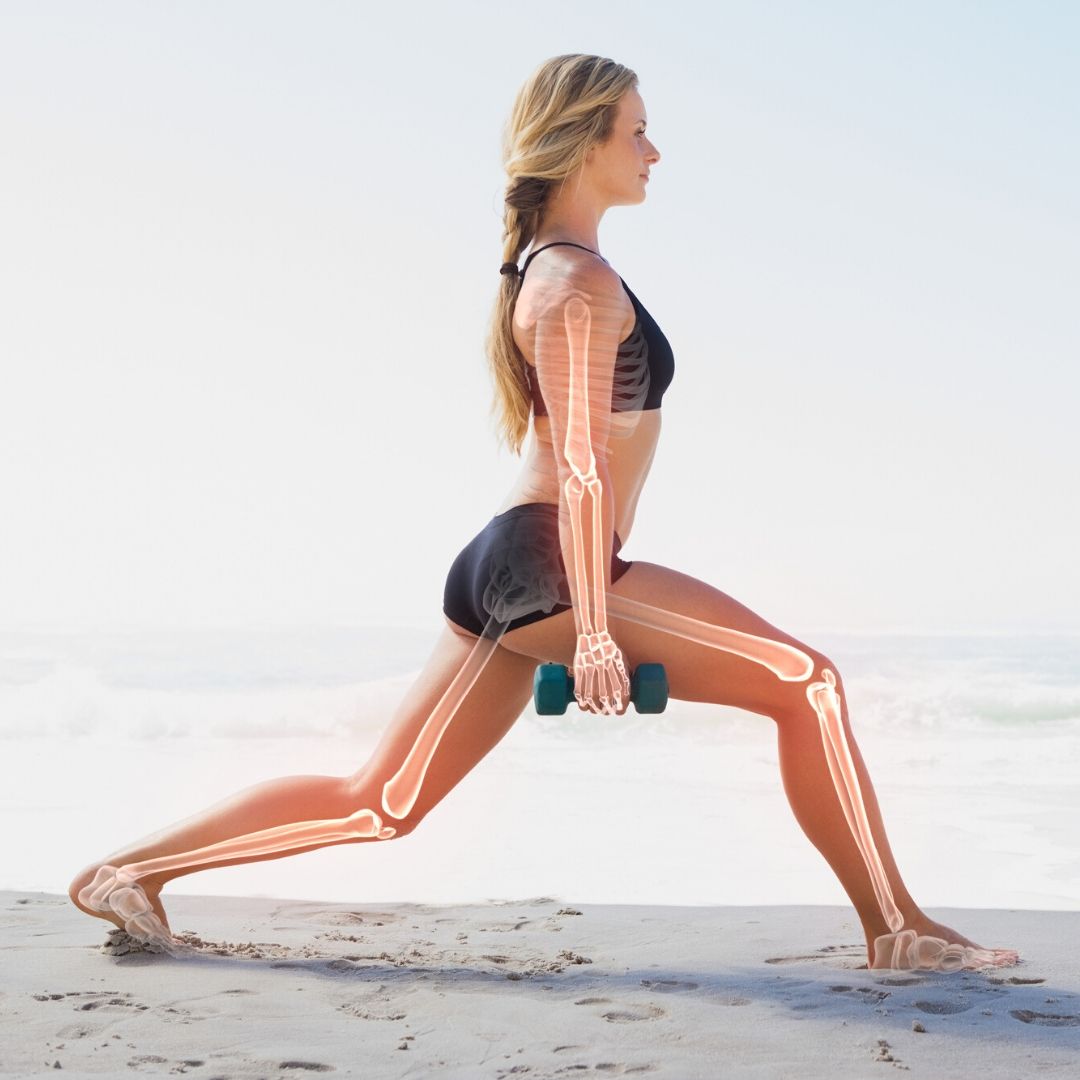Resistance workouts for bone health
Hello everyone! We hope you have had a fantastic break and are raring to go for 2020. We’re go-ing to kick off proceedings this year with a blog topic we think is becoming more and more im-portant. It’s no secret that people are living longer and with an ageing population comes higher rates of certain conditions and diseases, such as osteoarthritis (i.e. the degeneration of joints) and osteoporosis (i.e. weakening of the bones). Did you know that exercise is good for the bones and can help keep your skeleton strong as you age? Read on to find out more…
Good news people, exercise is great for bone health! In fact, it is widely accepted that exercise is one of the most effective ways of keeping your bones strong and healthy. So, there you have it. Say no more. Blog ends…
Just kidding! We’ll give you a bit more than that 😉. There are several different types of exercise, and while all types will benefit your body in some way, if you want to target bone health and par-ticularly strength, then resistance type exercises are up there as some of the best.

What is resistance exercise?
Resistance exercise is any exercise that has the body working against an external force and will often involve the use of fitness equipment including weights (either free or machine weights), re-sistance bands, cables and medicine balls. Different examples of resistance exercises include:
• Pushing against a wall
• A weighted bicep curl or lunge
• Banded or cable shoulder strengthening
• Riding on a static bike with varying intensities
Why resistance exercise?
So why resistance over other types of exercise we hear you ask? Quite simply, when we exer-cise, we place forces or loads on the body which help to build our muscles which in turn place stress on the skeleton (remember, muscles attach to bones via tendons). This stress placed on the skeleton is what is needed to activate the bone building cells of the body (they are called ‘os-teoblasts’ if you really want to know). Some forms of exercise lead to lots of activation of these cells, other forms to a lesser degree.
Performing our everyday activities such as washing, walking, cooking and dressing is not enough to create lots of cell activation, so keeping ourselves working at this level will not necessarily build strength in our bones (although it may help them from becoming weak - a good reason to not be a couch potato). If we want to build bone, then we need to regularly exert ourselves over the limit of everyday life tasks. This is where exercise and especially the resistance type comes into play. Resistance exercise will place a variety of force on the skeleton through the muscular system, and therefore lead to increased bone cell activation and eventually stronger bones.
Will other types of exercise help my bones too?
As we mentioned above, different exercises lead to different bone cell activation rates. Re-sistance exercise is not the only type that is good for building bone strength. Other examples in-clude stair climbing, hill walking and high impact exercises such as basketball and aerobics. Whilst swimming is an awesome form of exercise for the body, it has been shown to be less ef-fective at building bone strength, even though the water provides some resistance against the body as you swim. Good to know!
The type of exercise you do will also be dependent on many things. Age, for example, is a big factor. Someone who is elderly and has a history of bone fractures due to osteoporosis would not be put on a program of heavy weightlifting. However, they could very much benefit from perform-ing regular light banded or cable exercises, combined with walking or gentle dancing. Whereas a middle-aged person with good fitness levels could benefit from a more intense weight program to ensure good bone health in their later years.
Bones need more than just exercise
It is important to remember that bone health is dependent on more than just exercise. Having a good diet which includes adequate amounts of vitamins and minerals is also a must. If you didn’t know already, Vitamin D and Calcium are two nutrients which are very important for ensuring your bones stay healthy from birth, all the way into your wise years. Get what you need by mak-ing sure you include a regular intake of spinach, kale, salmon, mackerel, cheese and milk. Many breakfast cereals will often have these nutrients added to them too. So, don’t skip your breakfast people!
To conclude…
The bottom line is bones need exercise to stay healthy for life. If you are unsure of what is right for you, then we are only a stone’s throw away. Please call us on 02 9922 6806 to make an ap-pointment and we’ll be happy to design a resistance program that will be unique to you and your needs. Now go and get your best gym lycra out and get ready for strong bones!
References:
1. Hong, AR. and Kim, SW. 2018. Effects of resistance exercise on bone health. Endocrinology and metabolism. 33 (4). 435-444. Available from: https://www.ncbi.nlm.nih.gov/pmc/articles/PMC6279907/
2. Benedetti, MG. et al. 2018. The effectiveness of physical exercise on bone density in osteo-porotic patients. BioMed research international. v. 2018, 4840531, 10 pages. Available from: https://www.hindawi.com/journals/bmri/2018/4840531/cta/
3. Osteoporosis Australia. 2013. Exercise - consumer guide. [Online]. Available from: https://www.osteoporosis.org.au/sites/default/files/files/Exercise%20Fact%20Sheet%202nd%20Edition.pdf. [Accessed 12 Dec 2019]
4. WebMD. 2019. Top foods for calcium and vitamin D. [Online]. Available from: https://www.webmd.com/food-recipes/guide/calcium-vitamin-d-foods. [Accessed 13 Dec 2019]
Uploaded : 20 December 2019




